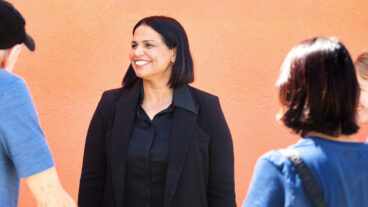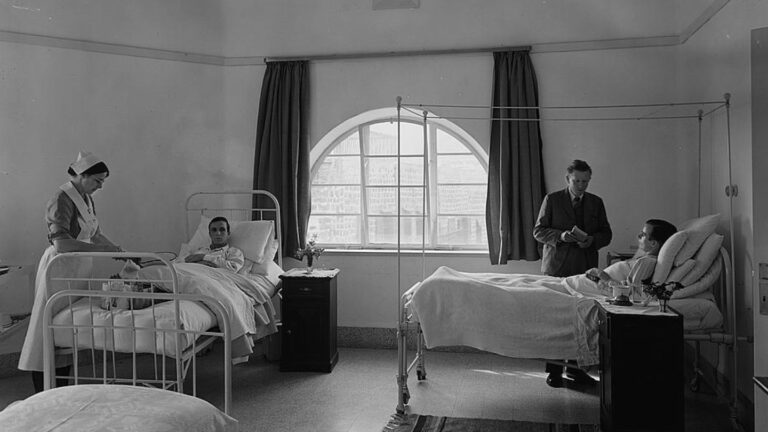On March 23rd, Israelis will trudge to the polls to cast their ballots yet again in our fourth election “do-over” of the last two years.
This is the first time Israel will have held four elections within a two-year period (and there’s absolutely no guarantee we won’t be facing a fifth within a very short time).
Israel’s democracy is a vibrant work in process, and this isn’t the only historic first the country has experienced.
Join us for a tour of 20 other election firsts in Israel.
- In 1949, signs exhorting citizens to “Go and Vote!” were posted to notify building residents about the location of their polling stations for the first elections to take place in the newly established State of Israel.
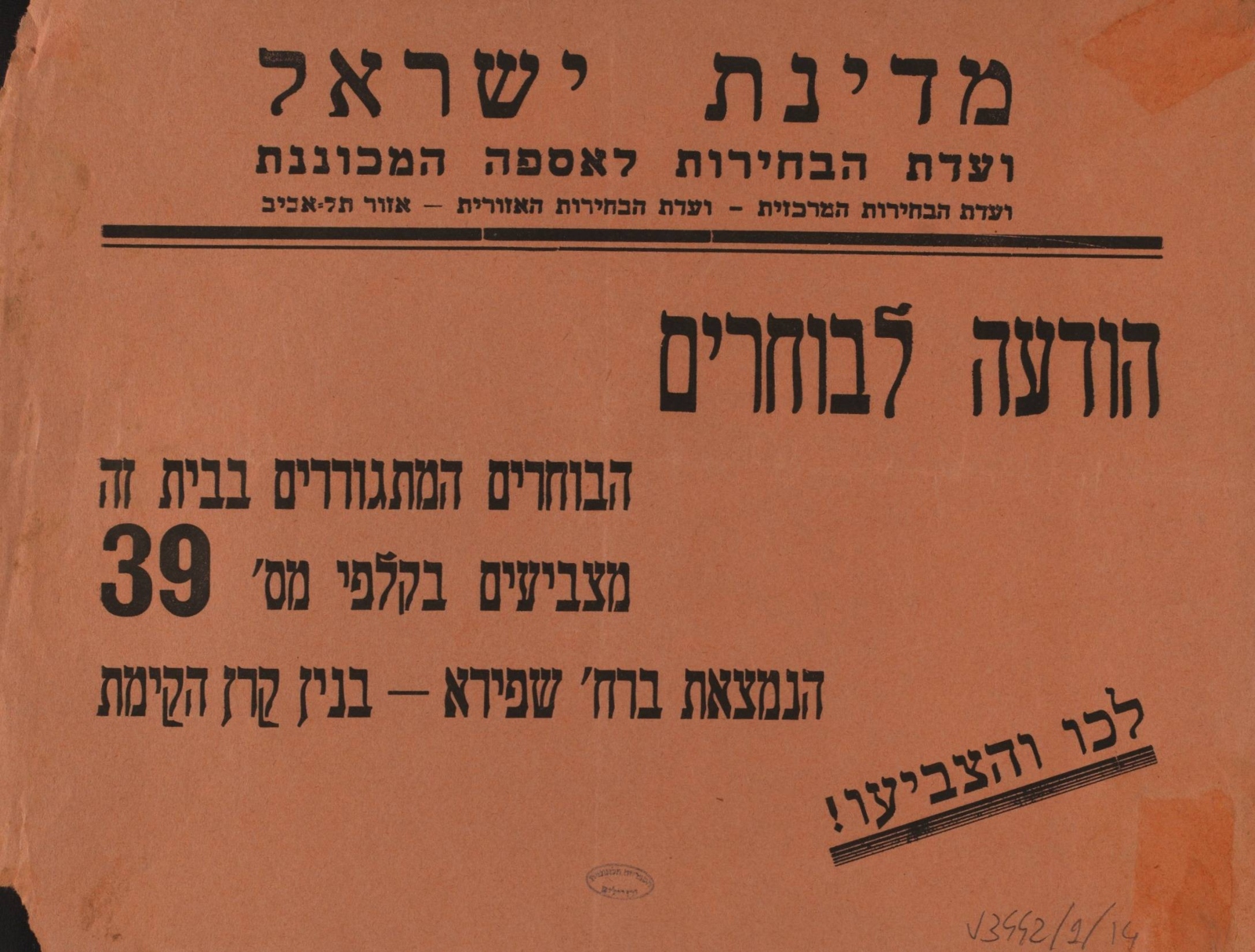
- That same year was the first in which a women’s party, formed by the Women’s Zionist Organization (WIZO),took part. Although only receiving enough votes to earn it a single seat in the first Knesset, WIZO did sound the call for equal rights.
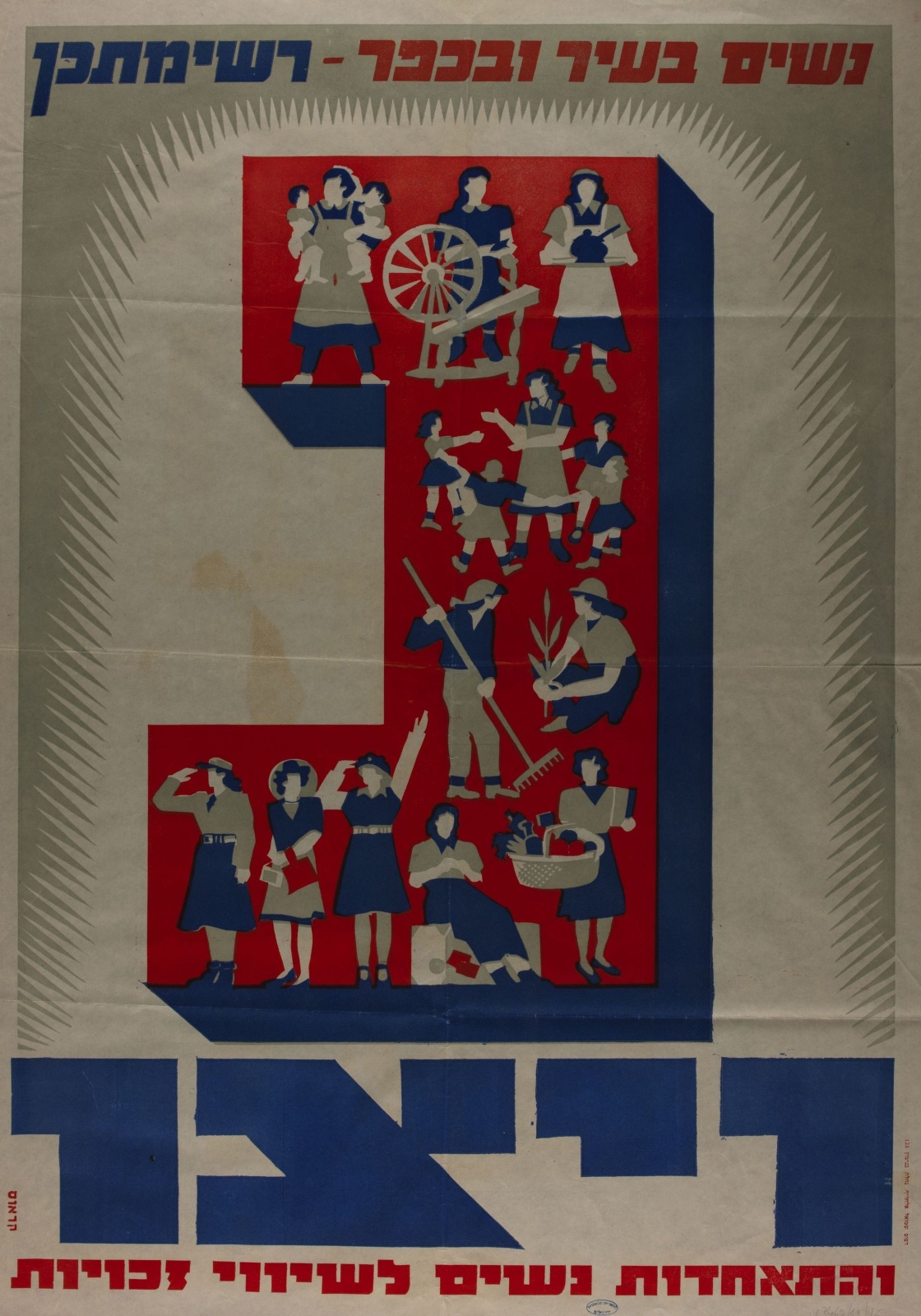
- The elections for the second Knesset, in 1951, were in fact the first Knesset elections, as the 1949 elections were actually for a National Assembly.
New immigrants were a deciding force, as large numbers of immigrants had come to Israel in mass waves and were eligible to vote. The “Ingathering of the Exiles” was celebrated in this poster for Hapoel HaMizrachi- Mizrachi Workers party (one of the predecessors of the National Religious Party).
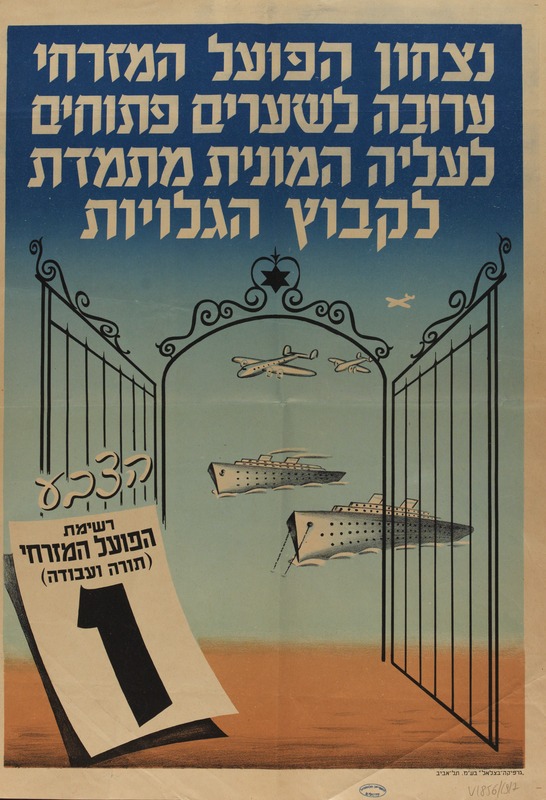
- The focus of the elections for the third Knesset in 1955 was David Ben-Gurion’s return after he had retired to Kibbutz Sde Boker in 1953.
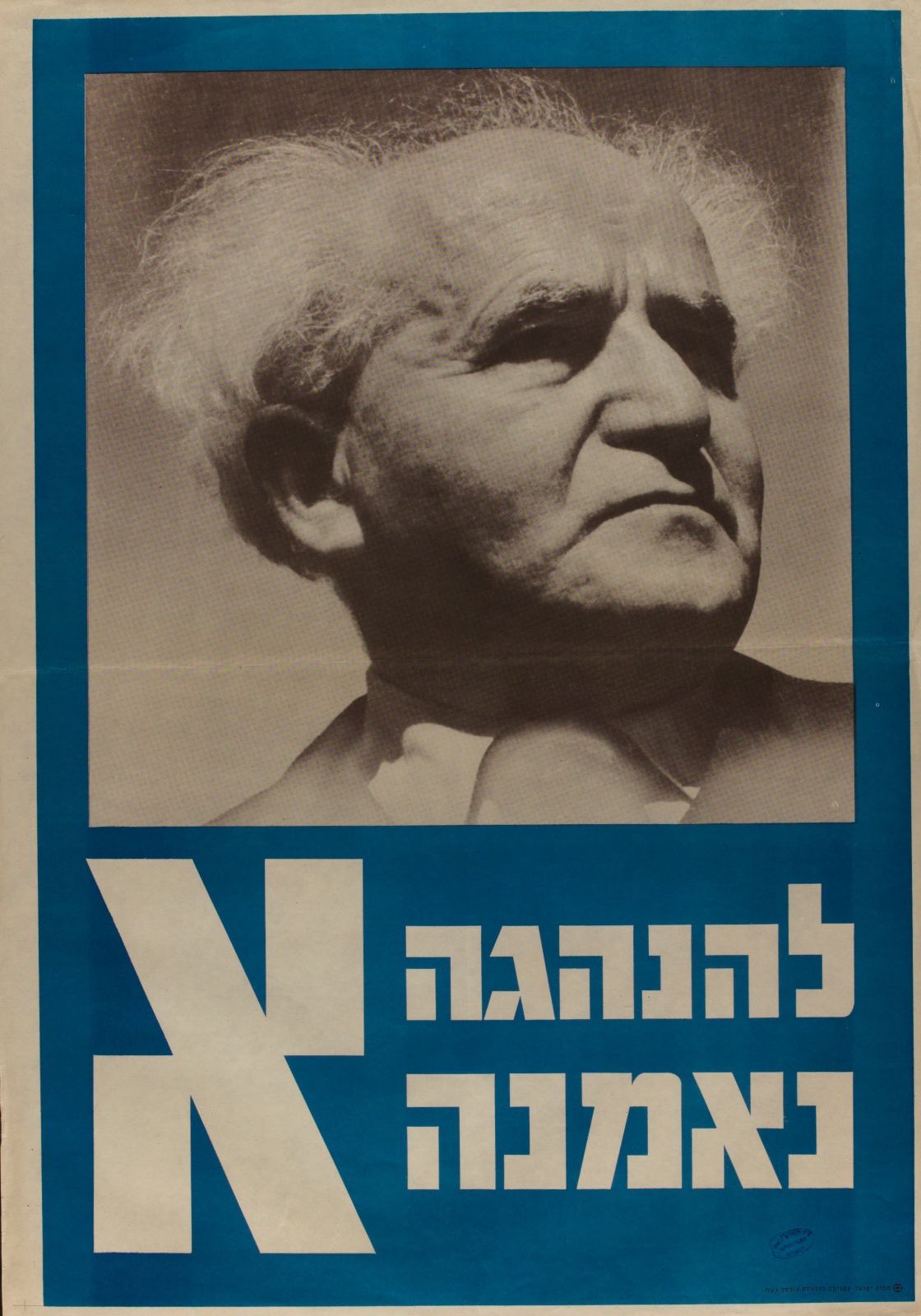
- 1959 marked the first time that Moshe Dayan entered the political realm, where this war hero, Chief of Staff and IDF commander in chief during the Sinai Campaign was subject to criticism, as in this poster issued by the Herut party (forerunner of Likud) portraying Dayan and Mapai (the Labor Party) as being divorced from reality and the problems of the poor.
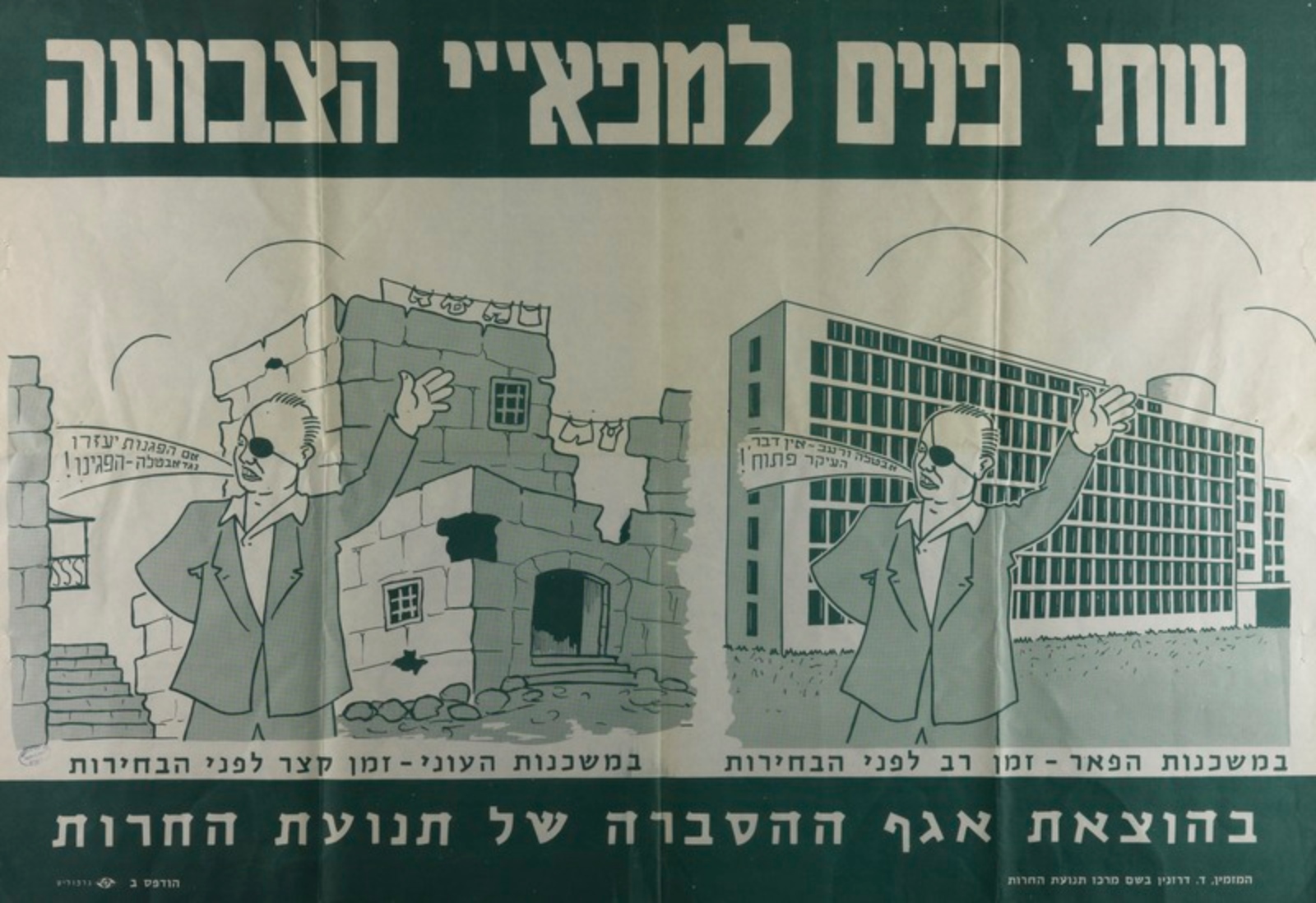
- Although it would take another 16 years before Mapai would fall from power, changes in the Israeli political landscape were beginning to emerge as early as 1961.
In the wake of a power struggle within his coalition over the Lavon Affair (a botched espionage and guerilla operation in Egypt), Ben-Gurion called for snap elections – a first in Israeli politics. The strategy did not succeed. Despite a historic rocket launch that may or may not have been an exercise in political campaigning or a show of regional military power, Ben-Gurion resigned from the party leadership and went on to form the Rafi Party.
Golda and Shulamit
- In 1965, for the first time, a political party was disqualified on the grounds of its position regarding the State of Israel. The Central Elections Committee banned the Al Ard party, (the Arab Socialist list), declaring it “an illegal association, because its initiators negate the [territorial] integrity of the State of Israel and its existence.”
Al Ard filed an appeal with the Supreme Court where the majority ruled in favor of the ban. “The majority believed that a party that called for the elimination of the State of Israel should not be permitted to participate in the elections.” (Read more about the colorful 1965 elections here).
- The 1969 elections for the seventh Knesset were the first held after the Six-Day War. Following the death of Prime Minister Levi Eshkol in early 1969, Mapai General Secretary Golda Meir was appointed temporary acting prime minister and then headed Ma’arach (Alignment of Labor parties Mapai and Ahdut Ha’Avoda) in the 1969 elections. Meir remains Israel’s first and only female prime minister.
- Elections in December 1973, held in the shadow of the Yom Kippur War, were the first to introduce a party concerned mainly with civil and human rights: Ratz, (the progenitor of Meretz), headed by Shulamit Aloni.
Social protest movement, HaPanterimHaShchorim (Israel’s Black Panthers), ran and came close to meeting the minimum percentage threshold but in the end did not win a seat. On the other side of the political spectrum, Meir Kahane’s Kach Party also ran for the first time in 1973 but entered the Knesset only in 1984.
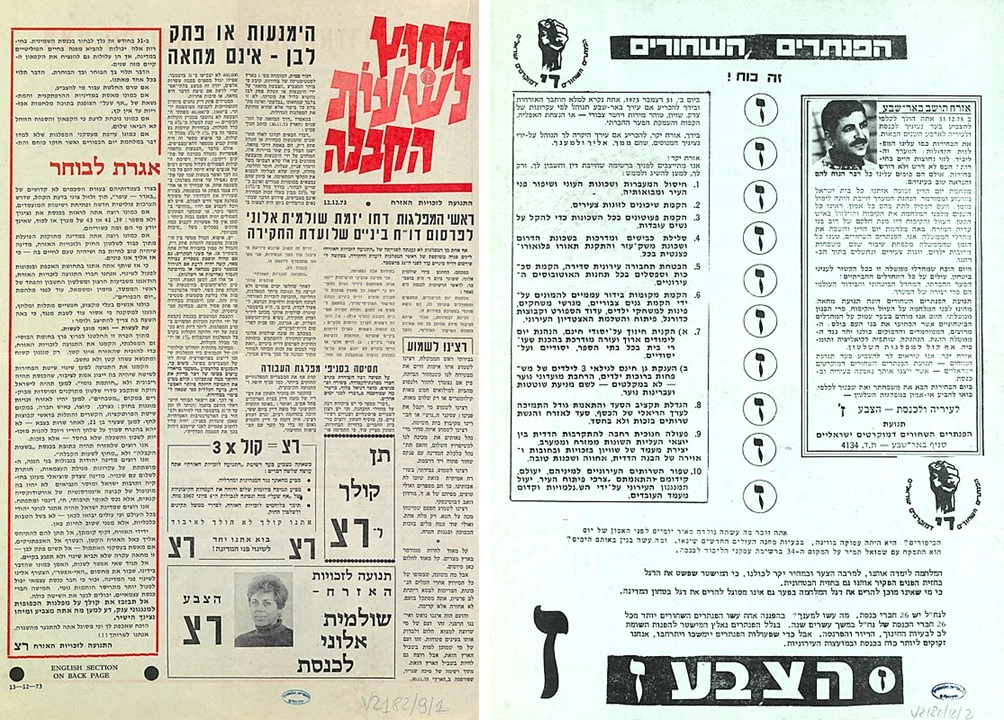
- The first for Israeli elections in 1977 was the Likud Party’s upset victory, which instated Menahem Begin as Israel’s first non-Labor prime minister since the founding of the state.
- The first regarding the 1981 elections was a rise in violence. As the Israel Democracy Institute commented, “It is customary to view the election campaign for the 10th Knesset in 1981 as the most tense and violent in Israel’s history. These elections reflected extreme ethnic tension, and—more than in any election campaign before or since—there was a strong correlation between ethnic origin and voting patterns.”
- The elections of 1984 marked another first with the formation of a national unity government. Although the Alignment gained the most seats, it was unable to form a coalition and agreed to a rotation with Likud. Respective party leaders Shimon Peres and Yitzhak Shamir held the post of prime minister for two years each.
Evening entertainment
- In 1988, Israeli elections became an evening’s entertainment when, for the first time, political parties weregiven license to present their platforms onthe country’s single TV station (learn more about that here).
- 1992 saw a return to a Labor-led government, headed by Yitzhak Rabin. Rabin was assassinated on November 4, 1995, becoming the first, and hopefully last, Israeli prime minister to be assassinated.
- The 1996 elections were the first time that two separate ballots would be cast simultaneously: one for the prime ministerial candidate, the other for the political party. (The direct election for prime minister was abolished by Ariel Sharon after he took office in 2001.)
- 1999 was the first time that the two large parliamentary groups held fewer than half the Knesset seats.
- It was also the year that AlehYarok (Green Leaf), a party in support of cannabis legalization, entered the political arena, although it failed to pass the minimum percentage threshold.
- Although the Likud won the 2003 elections, the 16th Knesset was unique in that three different governments held office due to disagreements over the disengagement from Gaza: first, a center-right government consisting of the Likud, Shinui, the National Union and the National Religious Party; second, in 2004, a center-left coalition comprised of Likud, United Torah Judaism, and the Labor Party; and finally, after the disengagement in August 2005, the Likud split and Ariel Sharon formed Kadima- the first time an incumbent prime minister split from an existing party.
- In the elections of 2006, for the first time, a party that was neither Labor nor Likud came to power: Kadima, headed by Ehud Olmert, who had taken over the party leadership following Sharon suffering an incapacitating stroke.
- In 2009, despite having won a majority, Kadima – now headed by Tzipi Livni – was unable to form a coalition and the government was formed by Benjamin Netanyahu who, in another historic first, has surpassed Ben-Gurion’s record as Israel’s longest-serving prime minister. It remains to be seen whether this winning streak continues.
For more archived historical election propaganda, news media and other ephemera, visit Election Chronicles, an online exhibit from the National Library of Israel.




![Elections 1977 – Likud posters] In 1977, Menahem Begin led an election upset as Israel’s first non-Labor prime minister. Credit: GPO Elections 1977 – Likud posters] In 1977, Menahem Begin led an election upset as Israel’s first non-Labor prime minister. Credit: GPO](https://static.israel21c.org/www/uploads/2019/09/Elections_1977___Likud_posters_-_GPO-1520x855.jpg)








